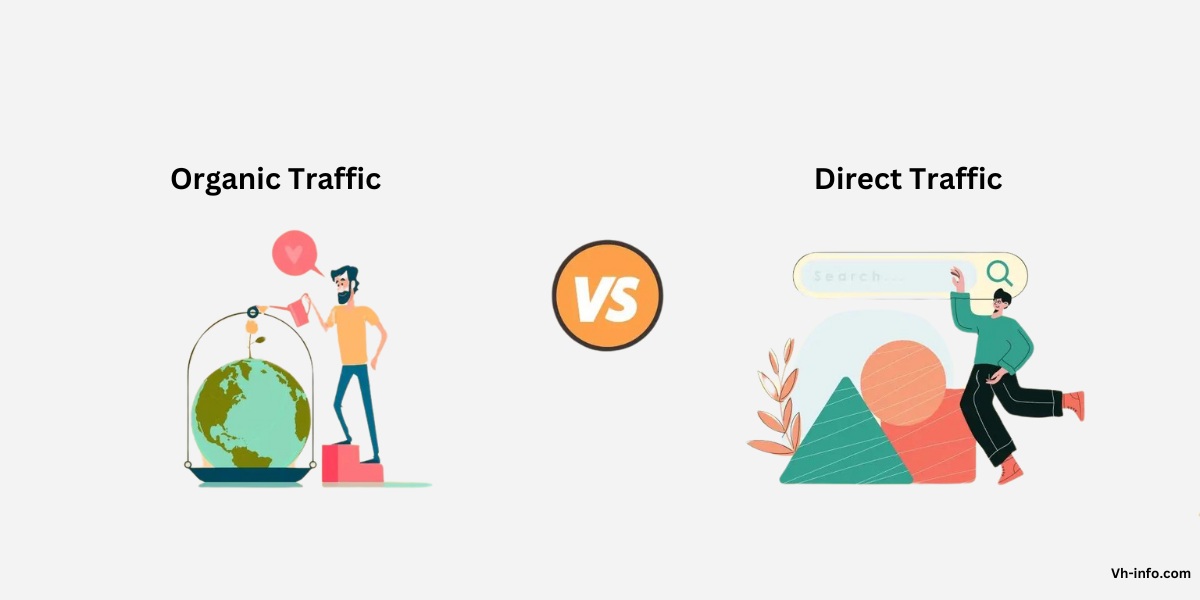As a SaaS company, understanding the different types of website traffic is crucial for optimizing your marketing strategies and driving growth. Two key sources of traffic are direct and organic, each with its own characteristics and benefits.
In this article, we’ll dive into the differences between direct traffic vs organic traffic, how to earn each type, and why they matter for your SaaS business. We’ll also explore how VH Info’s expert link-building services can help you boost your organic traffic and overall online presence.
Direct Traffic vs. Organic Traffic
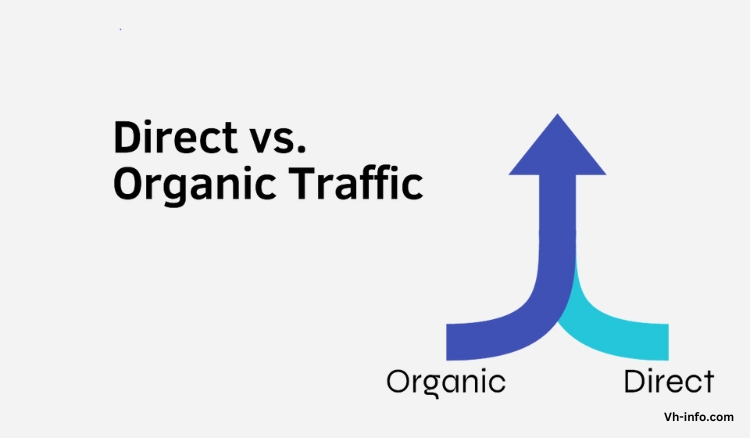
Before we delve into the specifics of each traffic type, let’s define what we mean by direct traffic and organic search traffic:
- Direct traffic refers to visitors who arrive at your website by typing your URL directly into their browser or clicking on a bookmarked link.
- Organic traffic, on the other hand, comes from visitors who find your website through search engine results, without clicking on paid ads.
While both types of traffic are valuable, they represent different stages of the customer journey and require distinct strategies to attract and convert visitors.
What is Direct Traffic?
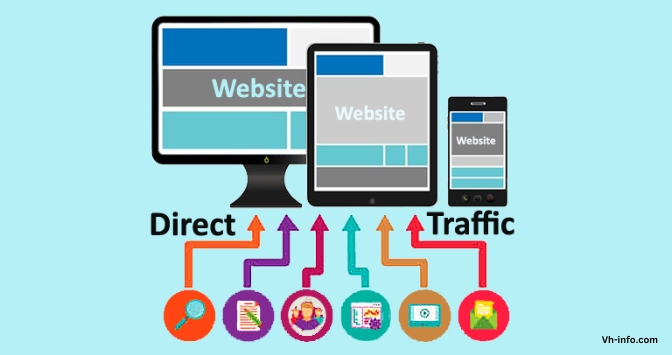
Direct traffic consists of visitors who already know your website URL and navigate directly to it. This could be a result of prior knowledge of your brand, offline marketing efforts, or having previously bookmarked your site.
How Do I Get Direct Traffic?
To increase direct traffic to your SaaS website, focus on building brand awareness and creating a memorable URL.
Some strategies include:
- Offline marketing: Promote your website URL in print ads, business cards, and other offline materials.
- Email marketing: Include links to your website in email signatures and newsletters.
- Branded search: Encourage customers to search for your brand name directly in search engines.
- Easy-to-remember URL: Choose a short, memorable domain name that reflects your brand.
What is Organic Traffic?
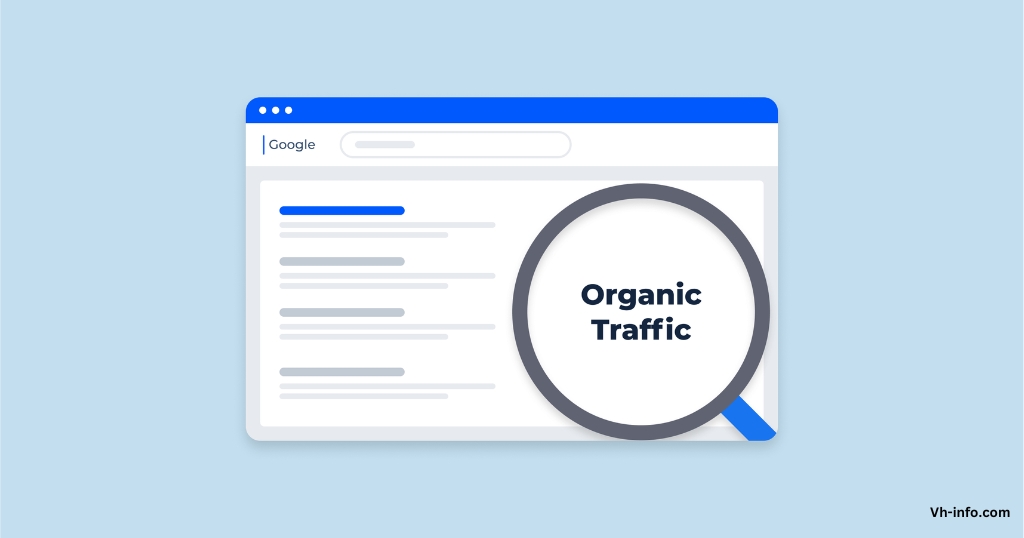
Organic traffic refers to visitors who find your website through search engine results, without clicking on paid ads. This type of traffic is earned through effective search engine optimization (SEO) practices, such as keyword research, content optimization, and building high-quality backlinks.
How Do I Get Organic Traffic?
To boost organic traffic to your SaaS website, implement the following SEO strategies:
- Keyword research: Identify relevant keywords your target audience is searching for and optimize your content accordingly.
- Quality content: Create valuable, informative content that addresses your audience’s needs and incorporates target keywords naturally.
- On-page optimization: Ensure your website’s structure, meta tags, and URLs are optimized for search engines.
- Link building: Earn high-quality backlinks from authoritative websites to improve your search engine rankings. VH Info specializes in helping SaaS companies build powerful backlinks to drive organic traffic.
Are There Other Types of Traffic?
In addition to direct and organic traffic, there are different sources of web traffic:
- Referral traffic: Visitors who arrive at your site by clicking on a link from another website.
- Social traffic: Visitors who come from social media platforms like Facebook, Twitter, or LinkedIn.
- Email traffic: Visitors who click on links within emails you’ve sent.
- Paid traffic: Visitors who click on paid ads, such as Google Ads or social media promotions.
How Do You Earn Organic Traffic vs Direct Traffic?
Direct Traffic
To earn direct traffic, focus on increasing brand awareness and making it easy for visitors to remember and access your website URL.
Strategies include:
- Consistent branding across all marketing channels
- Memorable, easy-to-type URL
- Offline advertising featuring your website URL
- Encouraging customers to bookmark your site
Organic Traffic
Earning organic traffic requires a comprehensive SEO strategy that includes:
- Researching and targeting relevant keywords
- Creating high-quality, keyword-optimized content
- Improving on-page elements like meta tags and site structure
- Building authoritative backlinks to your site
Why Should You Care If You’re Earning Organic Traffic vs Direct Traffic?
Understanding the breakdown of your website traffic sources is essential for refining your marketing strategies and allocating resources effectively. Direct traffic indicates strong brand awareness and customer loyalty, while organic traffic reflects the effectiveness of your SEO efforts and the relevance of your content to search engine users.
Analyzing your traffic sources enables you to pinpoint areas for enhancement and customize your strategy to more effectively reach your intended audience. For example, if you notice a high percentage of direct traffic but low organic traffic, you may need to invest more in SEO and content marketing to attract new visitors through search engines and improve the effectiveness of your marketing campaigns.
Organic Traffic vs Direct Traffic: Which is Best?
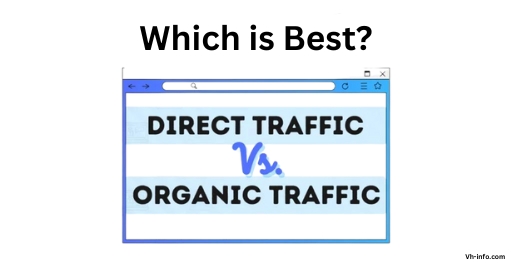
Both organic and direct traffic have their strengths and weaknesses, and the best type of traffic for your SaaS business depends on your specific goals and target audience.
1. Organic Traffic:
Pros:
- Attracts new visitors who are actively searching for solutions your product offers
- Provides long-term, sustainable growth as your search engine rankings improve
- Builds trust and credibility through high-quality, relevant content
Cons:
- Requires ongoing investment in SEO and content marketing
- Can take time to see significant results
- Dependent on search engine algorithms and updates
2. Direct Traffic:
Pros:
- Indicates strong brand awareness and customer loyalty
- Typically has higher conversion rates, as visitors are already familiar with your brand
- Provides a consistent stream of returning visitors
Cons:
- Limited potential for attracting new visitors
- Relies heavily on offline marketing and brand-building efforts
- Can be difficult to track the specific sources of direct traffic
Ultimately, a balanced approach that focuses on both organic and direct traffic is ideal for most SaaS businesses. By investing in SEO and content marketing to drive organic traffic while also building brand awareness to increase direct traffic, you can create a diverse and sustainable traffic portfolio.
FAQ’s:
Can Paid Marketing Affect Organic vs Direct Traffic?
Yes, paid marketing can indirectly impact both organic and direct traffic. While paid ads themselves do not contribute to organic or direct traffic, they can increase brand awareness and encourage users to search for your brand directly or click on your organic search results.
Can You Track Organic vs Direct Traffic With the Same Tools?
Yes, web analytics platforms like Google Analytics allow you to track and compare organic and direct traffic, as well as other traffic sources. By setting up tracking codes and analyzing your traffic data, you can gain valuable insights into your website’s performance and user behavior.
Does Private Browsing Block Organic or Direct Traffic Tracking?
Private browsing can affect the tracking of both organic and direct traffic. In some cases, visits from private browsing sessions may be counted as direct traffic instead of the actual referral source. However, this impact is generally minimal and does not significantly skew your overall traffic data.
How Can I increase Organic Traffic to my Website?
To increase organic traffic, focus on SEO best practices like keyword research, content optimization, and link building. VH Info’s SaaS link-building services can help you earn high-quality backlinks to improve your search engine rankings and drive more organic traffic.
How Can I Increase Direct Traffic to my Website?
To boost direct traffic, prioritize brand awareness and make your website URL memorable. Strategies include offline advertising, email marketing, and encouraging customers to bookmark your site.
Is Direct Traffic Good For my Website?
Yes, direct traffic is valuable because it indicates strong brand awareness and customer loyalty. Visitors who arrive at your site directly are more likely to be engaged and convert into customers.
Can Social Media Traffic Be Considered Direct or Organic?
Social media traffic is typically classified as its own category, separate from direct or organic traffic. However, if a user clicks on a link to your website from a social media platform and the referral information is not passed, it may be counted as direct traffic.
Why Does My Website Have More Direct Traffic Than Organic?
A higher proportion of direct traffic could indicate strong brand awareness and customer loyalty. However, it may also suggest that your SEO efforts need improvement to attract more organic traffic from search engines.
How Do Backlinks Affect Organic Traffic?
Backlinks from authoritative, relevant websites signal to search engines that your content is valuable and trustworthy. As a result, high-quality backlinks can improve your search engine rankings and drive more organic traffic to your site.
Is Direct Traffic Or Organic Traffic Better For Your Business?
Both direct and organic traffic are valuable for your business, and the ideal balance depends on your specific goals and target audience. Direct traffic indicates strong brand awareness, while organic traffic attracts new visitors actively searching for your solutions.
How Can Small Businesses Increase Their Direct and Organic Traffic?
Small businesses can increase direct and organic traffic by investing in brand awareness, creating memorable website URLs, and implementing SEO strategies like keyword optimization and link building. Partnering with a specialized service like VH Info can help small businesses build high-quality backlinks to boost organic traffic.
What Are Some Common Mistakes When Analyzing Traffic Sources?
Common mistakes include failing to set up proper tracking codes, misinterpreting data, and focusing too heavily on vanity metrics like total traffic instead of actionable insights. It’s essential to regularly review and analyze your traffic data to make informed decisions about your marketing strategies.
Conclusion
Understanding the differences between direct traffic vs organic traffic is crucial for optimizing your SaaS website and driving sustainable growth.
By implementing strategies to increase both types of traffic, such as investing in brand awareness and partnering with VH-Info for expert link-building services, you can create a balanced and effective approach to attracting and converting visitors.
Remember to regularly analyze your website traffic data using tools like Google Analytics, and continually refine your marketing efforts based on the insights gained.
With a clear understanding of your traffic sources and a commitment to ongoing optimization, you can position your SaaS business for long-term success in the competitive online landscape.

